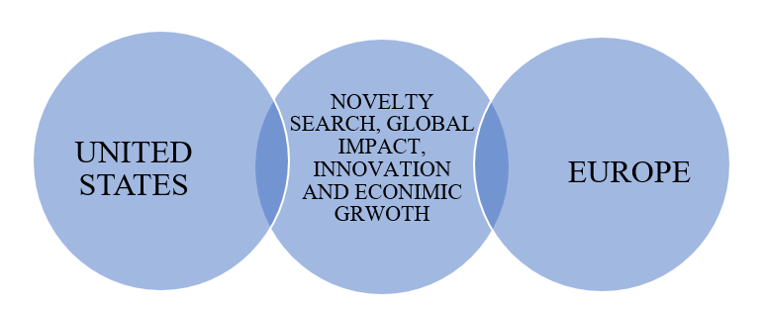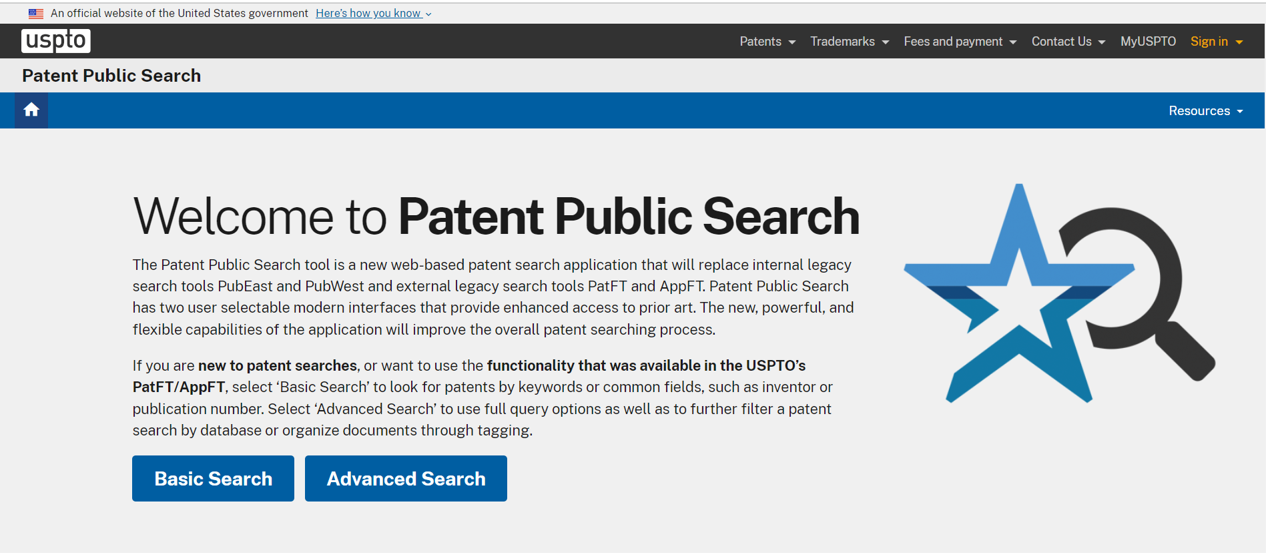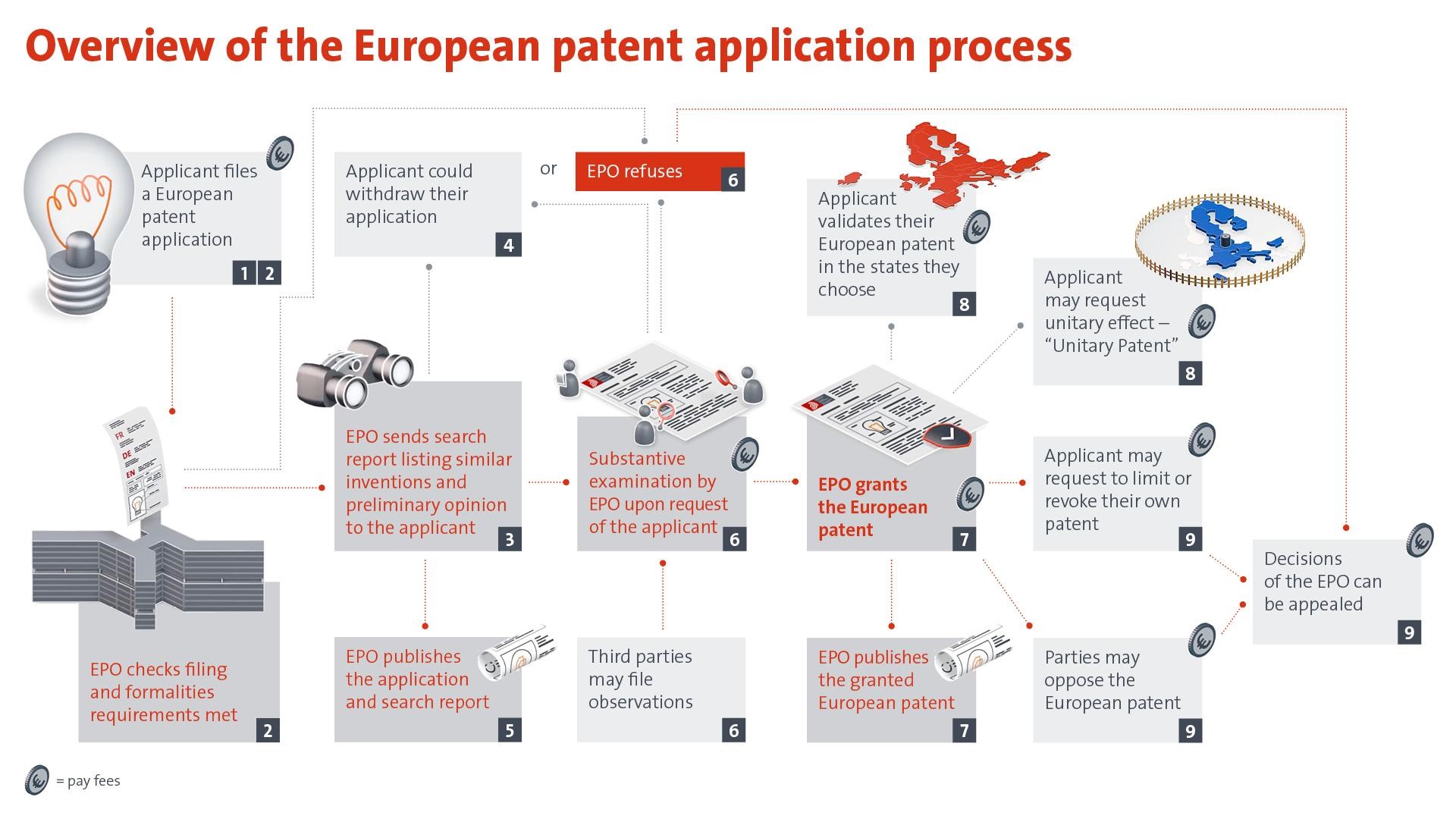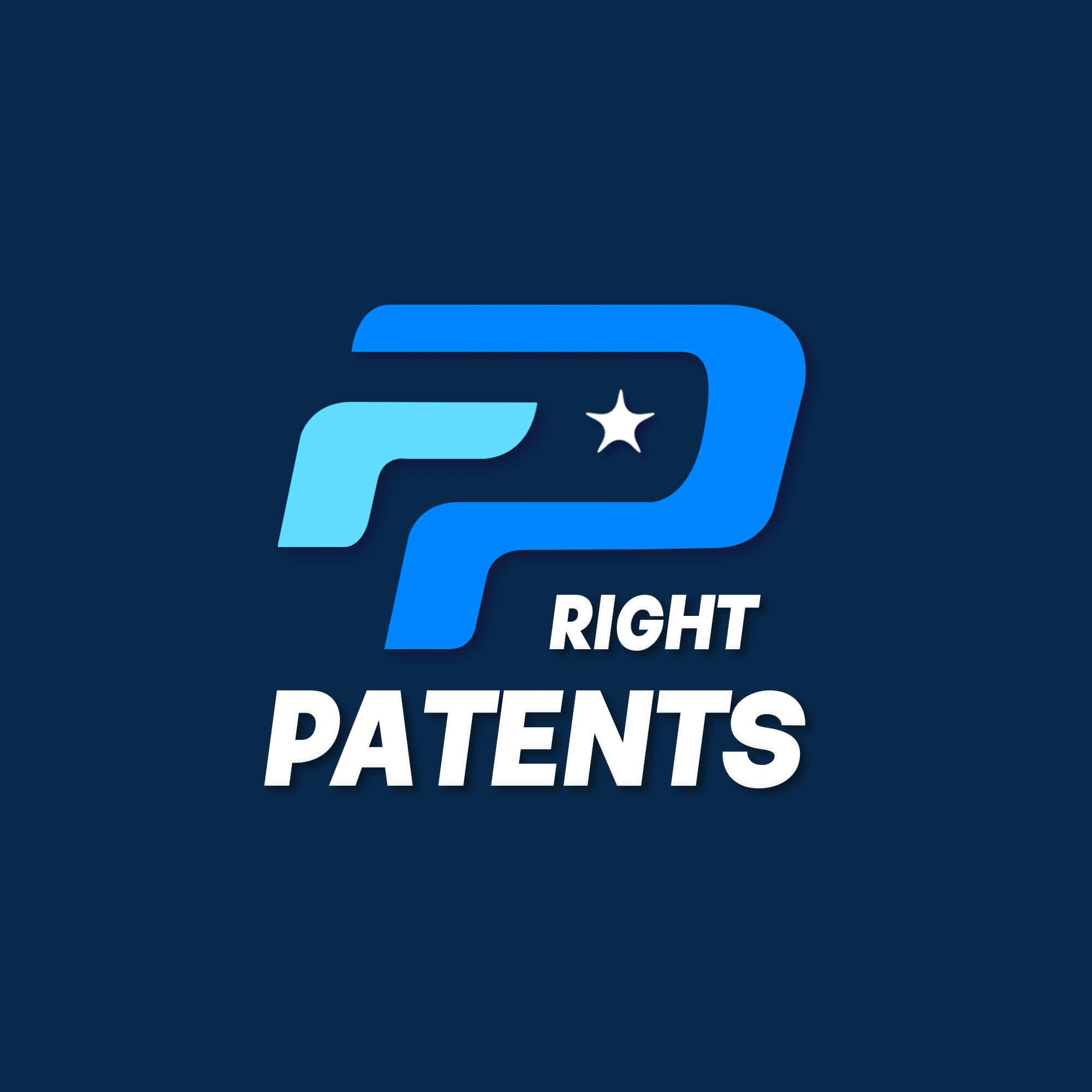Novelty Search using USPTO and EPO: Patents play a crucial role in fostering innovation and protecting intellectual property, contributing to economic development. The United States and Europe have distinct patent frameworks, each shaped by historical, legal, and cultural factors. In the United States, the patent system is governed by the United States Patent and Trademark Office (USPTO). The U.S. follows a “first-to-invent” system, which grants patent rights to the first inventor to conceive of an invention. On the other hand, Europe employs a unitary patent system through the European Patent Office (EPO). The European Patent Convention (EPC) establishes a harmonized approach for patent protection across participating European countries. There are a number of factors which are taken into consideration; however, this article will focus on the Novelty criteria.
INTRODUCTION
With the growing dynamics of innovation and technology world-wide, the sphere of Intellectual Property Rights has expended its realm throughout! Patents stand as legal instruments that fuel progress, protect intellectual property, and stimulate economic growth. A patent is a grant from a government authority that provides inventors with exclusive rights over their inventions for a specified period, typically 20 years (from the filing of application). The granting of patents is not a mere legal formality; it is a social contract between inventors and society. In exchange for disclosing the details of their inventions to the public, inventors are granted a limited monopoly, during which they can capitalize on their innovations. Once the patent term expires, the knowledge becomes part of the public domain, contributing to the collective wealth of human understanding.



In United States, the patent system operates under the authority of the U.S. Constitution, which empowers Congress to promote the progress of science and useful arts by granting inventors exclusive rights for their discoveries and it is administered by the United States Patent and Trademark Office (USPTO). The key patents in U.S. are as follows-
- Utility Patents- Utility Patents: Granted for new and useful processes, machines, articles of manufacture, or compositions of matter.
- Design Patents: Awarded for new, original, and ornamental designs for an article of manufacture.
- Plant Patents: Issued for new and distinct varieties of plants, other than tuber-propagated plants or hybrids.
Patentability Criteria in U.S. includes the following-
- Novelty
- Non-Obviousness
- Utility
A European patent is the result of a unified grant procedure before the EPO that follows the European Patent Convention (EPC). Before grant, a European patent application is a unitary legal entity. However, after grant, a “European patent” essentially ceases to have unitary character. In order to be eligible for patents in Europe, there are three conditions which must be fulfilled. They are-
- Novelty
- Inventive step
- Industrial application[1]
Novelty Search using USPTO
UNITED STATES DATABASES AND RESOURCES AND THE STEP BY STEP PROCEDURE TO APPLY FOR PATENT
The official website of the USPTO (https://www.uspto.gov) provides free access to a variety of patent-related resources.
Patent Search: The USPTO’s Patent Full-Text and Image Database (PatFT) allows users to search and retrieve full-text patents dating back to 1976. Also, Read: What is Novelty Search Meaning?
AppFT: The USPTO’s AppFT database provides access to published patent applications



STEP BY STEP PROCEDURE TO APPLY FOR PATENT IN US
- Access the USPTO Website:
Visit the official website of the USPTO at https://www.uspto.gov.
- Navigate to the Patent Search Page:
On the USPTO homepage, locate the “Patents” section in the top navigation bar.
Click on the “Search for Patents” option. This will take you to the Patent Search page.
- Choose a Patent Search Database:
The USPTO provides several databases for searching patents and patent applications. Common databases include:
- PatFT (Patent Full-Text and Image Database): Allows searching and retrieving full-text patents dating back to 1976.
- AppFT (Applications Full-Text and Image Database): Provides access to published patent applications.
- PAIR (Patent Application Information Retrieval): Allows users to check the status of patent applications and view prosecution history.
- Perform a Patent Search:
Depending on your search criteria, you can perform various types of searches, including:
- Quick Search: Enter keywords, patent numbers, or other criteria to quickly locate relevant patents.
- Advanced Search: Use specific fields and criteria to narrow down search results, such as inventor names, assignees, or publication dates.
- Use Boolean Operators:
To refine your search, use Boolean operators (AND, OR, NOT) to combine or exclude specific terms.Use quotation marks to search for exact phrases.
- Review Search Results:
After performing a search, review the list of search results.
Click on a patent title to access detailed information about the patent, including the full text and images.
- Access PDF Versions:
Many patents have PDF versions available for download. You can access and download the complete patent document for further analysis. Also, Read: What is patentability search and why perform it before filing your patent application?
- Explore Additional Resources:
The USPTO website offers additional resources, such as:
- Global Dossier: Provides access to patent documents from multiple jurisdictions.
- Patent Assignment Search:
Allows searching for patent assignments and ownership information
- Use USPTO’s PatentsView:
- PatentsView (https://www.patentsview.org) is a visualization tool supported by the USPTO. It provides an interactive way to explore patent data.
- Keep Abreast of Updates and Changes:
[2]The USPTO regularly updates its databases and tools. Stay informed about new features, changes in search functionality, and any additional resources.
Novelty Search using EPO
EUROPEAN PATENT DATABASE[3]
Espacenet is an entry-level, internet-based patent document search service offered free of charge. It provides basic search and retrieval functions on a range of patent and patent-related documents. As an entry-level service espacenet can be a new user’s first experience with patent information. In other words, Espacenet[4] is the official patent search tool provided by the European Patent Office (EPO). It offers free access to a vast collection of patent documents from around the world, including European patents. Users can perform advanced searches, view patent documents, and access legal status information.
STEP BY STEP PROCEDURE [5]TO APPLY FOR PATENT IN EUROPE
- Draft your application
- Filing your European patent application
- Study of search report
- Decide whether to proceed
- Publication
- Examination
- Grant
- Post Grant Validation
[1] https://english.rvo.nl/topics/patents-intellectual-property-rights/apply/abroad/requirements-europe
[2] https://www.uspto.gov/patents/basics/patent-process-overview#step1
[3] https://www.youtube.com/watch?v=U-2PDaUrADk
[4] https://worldwide.espacenet.com/?locale=en_EP
[5] https://www.epo.org/en/new-to-patents/how-to-apply-for-a-patent



THE CONCEPT OF NOVELTY SEARCH
A novelty search, also known as a patentability search, is performed to determine whether an invention is new and original before the inventor submits a patent application by examining prior art. A novelty search for existing and related patents (known as “prior art”) might help an inventor, patent lawyer, or other patent examiner determine whether someone else had the same idea. If your innovation and the concept of a patent are significant, you might consider ordering a novelty search. It becomes important to perform a novelty search in order to improve the patent quality.
In Europe, the goal of the novelty search is to determine the state of the art. When applying for a European patent, an international novelty search must be performed. A European patent is essentially a single patent application that covers multiple European states during the examination procedure. After the patent is granted, it is divided into individual national patents in the states of your choice.[1]
Request for novelty search should be done shortly after submitting your application. If the applicant fails to do so, the European Patent Office will inform them of the words for which they might still request a search. If the applicant does not request a search during this timeframe, their application will expire. After approximately 9 months, the application will receive search results. The applicant may update their patent application based on new literature, which may contradict their original application.
IMPORTANCE OF CONDUCTING NOVELTY SEARCH
Performing a novelty search or a patentability search in patent system is an essential stage in the pursuit of patent protection for an invention. A novelty search, also known as a prior art search, plays a pivotal role in the patenting process by thoroughly examining existing literature, patents, and other publicly available information to determine the novelty and patentability of an invention.
Evaluating Patentability: Conducting a novelty search aid in ascertaining whether an invention satisfies the criterion of novelty, which is a fundamental prerequisite for acquiring a patent. It detects preexisting prior art, such as published documents and public disclosures, that have resemblance to the invention. If the innovation lacks novelty, it may be ineligible for patent protection.
Minimizing Duplication in Effort: Prior to committing time, resources, and capital to the process of patent application, doing a novelty search enables inventors to prevent duplicating their efforts on discoveries that may already own patents. By identifying preexisting analogous ideas, inventors can make well-informed choices regarding whether to proceed with the patent application or to enhance and distinguish their creation.
Risk Mitigation: Performing a comprehensive novelty search aids in reducing the danger of infringing upon pre-existing patents. By identifying pertinent prior art, inventors can evaluate the potential hazards and obstacles they might encounter throughout the patent application procedure and subsequent to acquiring a patent.
Enhancing Patent Quality: Conducting a thorough novelty search enhances the overall quality of the patent. Inventors can customize their patent applications by identifying pertinent previous art to differentiate their discoveries from existing technologies. This increases the likelihood of acquiring a robust and legally defensible patent.
Improving Patent Prosecution: Throughout the patent prosecution procedure, the findings of a novelty search might be utilized to address rejections made by the patent examiner. Gaining a comprehensive understanding of the existing body of knowledge in a particular field enables inventors and their legal representatives to construct compelling arguments that showcase the uniqueness and lack of obviousness of the invention. Novelty searches provide useful insights for informing business strategy, extending beyond the scope of the patent application procedure. It offers valuable information on the competitive environment, enabling businesses to make well-informed choices regarding product development, market entry, and intellectual property strategy.
Minimizing Legal Expenses: Conducting a novelty search to promptly identify potential patentability concerns can result in cost savings in legal fees. It enables inventors to improve their inventions or reassess their patent strategy prior to entering the more resource-intensive phases of the patent application procedure.
Meeting Disclosure Requirements: The U.S. patent system mandates that inventors must disclose any information that is relevant to the patentability of their invention. A novelty search aids inventors in completing their obligation by ensuring that pertinent previous art is revealed during the patent application procedure.
The European Patent Office (“EPO”) oversees and grants European patents under the European Patent Convention (“EPC”).
CONCLUSION
the novelty search stands as a crucial and foundational step in the patent application process, serving as a proactive measure to assess the uniqueness and patentability of an invention. By meticulously scouring existing patents, scientific literature, and other public disclosures, inventors and businesses gain valuable insights into the prior art landscape. This comprehensive analysis not only aids in making informed decisions about pursuing a patent but also helps in crafting patent applications that are distinct and defensible. The novelty search minimizes the risk of investing resources in inventions that lack novelty, steering innovators away from potential infringement issues and legal challenges down the road. Furthermore, by fulfilling the duty of disclosure, inventors contribute to the integrity of the patent system, fostering a culture of transparency and collaboration. Ultimately, the novelty search is an indispensable tool that not only safeguards the interests of inventors but also ensures the continued evolution of a vibrant and innovative intellectual property ecosystem. The United States Patent and Trademark Office (USPTO) and the European Patent Office (EPO) are significant entities in the worldwide patent landscape, with crucial responsibilities in the field of intellectual property. This proactive approach not only minimizes the risk of investing resources in inventions lacking novelty but also contributes to the creation of robust and defensible patents. The novelty search is an essential tool for inventors, businesses, and patent professionals, serving as the foundation for crafting strong patent applications and navigating the complex landscape of intellectual property. Ultimately, it plays a pivotal role in fostering innovation by ensuring that patented inventions contribute genuinely new and inventive solutions to the global knowledge pool.
[1] https://www.aathornton.com/resources/introduction-to/introduction-to-european-patents/#:~:text=A%20European%20patent%20is%2C%20in,in%20the%20states%20you%20choose.
